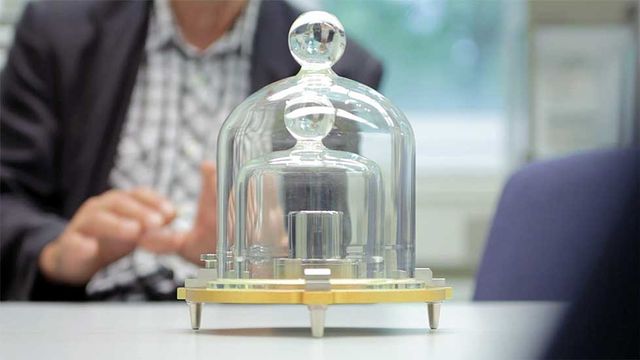Libra is one of the oldest inventions of mankind, which is still used. Street vendors began to use the simplest models in ancient Egypt. Since then, people have been worried about the problem of accurately determining weight.
Metric system
The metric system was developed in France during the revolution. French peasants received the right to free trade. But they soon realized that the system of measures adopted at that time was inconvenient for constant settlements. It was difficult to transfer one unit of weight to another. For example, each landowner could set his own pound value. As a result, one hundred different pounds were known. The French decided to create a new more convenient system of measures. The basis was the principle of converting one unit of measure to another by multiplying or dividing by the number ten or its degree.
Kilogram
For the measure of mass they took "grave". Its standards were considered the weight of a cubic decimeter of water under certain conditions. This method of determining weight was not very convenient. After all, it required very accurate instruments. Not everyone liked the consonance of the name of the measure with the title Count. As a result, it was changed to a gram and began to designate them one thousandth standard. For convenience, traders began to use a measure of a thousand grams - a kilogram. After 100 years, the kilogram standard was replaced with a cylinder made of an alloy of platinum and iridium.

A kilogram is the only measure of the metric system that has a prefix in the name. It is also the last unit of measure for which the standard is used. Over time, the platinum-iridium cylinder loses part of its mass. But at the same time, he still remains the current standard of the kilogram. Other units of measurement in the metric system are attached to it. Currently, scientists are considering options for determining the kilogram through physical constants. During the reign of Napoleon, the metric system spread throughout Europe. England, not conquered by France, retained its own system of measures. The main units of measurement of weight in it are the pound and stone. It is also used in the United States and Canada.
Mass measures in Russia
In Russia, units were used as measures, based on the mass of cereal grains. A unified system of measures of weight was introduced during the reign of Prince Vladimir. He introduced an annual check of weights. Peter the Great tightened fines for false scales. In 1730, the scales of Petersburg Customs were considered particularly accurate. They were used as exemplary to create test under the Senate.
In 1841, a depot of exemplary measures and weights was built in St. Petersburg. Traders brought instruments for checking into it. Standards of measures were stored in the depot. The organization’s tasks included the creation of tables of Russian and foreign measures, the production of standards for distribution to the regions. Later, the Main Chamber of Weights and Measures was founded. In 1882, D.I. Mendeleev headed the State Service for Weights and Measures. In 1898, he produced the standard pound.
Metrication
Russia switched to the metric system in 1918. Prior to this, the main Russian measure of mass was the pound (0.41 kg). He was received under Tsar Alexei Mikhailovich. Also, this unit was called the hryvnia. The hryvnia was used to weigh expensive metals. This word was also used to denote a monetary unit.
The pood was forty pounds. Ten pounds were Berkovets. This name comes from the name of the island of Bjerk. The standard barrel weighed 1 Berkovets. Smaller units of lot weight and spool were also used. Old mass measures are still found in proverbs and sayings. The transition dragged on for seven years. Only in 1925 a unified system was established throughout the Soviet Union . The main units of weight were carats, grams, kilograms and tons.